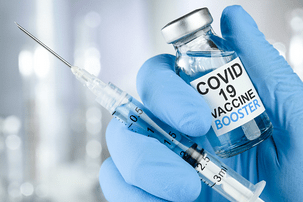Vaccines, Vaccines, and More Vaccines

We’ve been stuck in the global pandemic for longer than a year now. From the beginning, countries took different approaches and used different sources to explain those approaches. For instance, the Netherlands chose a fairly unstrict version of a lockdown, claiming that it would lead to herd immunity while simultaneously limiting the amount of economic impact. The government reeled back quite swiftly as it appeared this approach led to a lot of death and not necessarily a lot of immunity. Many scientists agreed that the only way towards herd immunity was through vaccines. Luckily, researchers around the globe had already been working with different strings of the covid virus for years, so there was a head start. Next to that, because of the severity of the pandemic, a lot of the bureaucracy surrounding the output of the vaccinations was cut down which sped up the process significantly. In the Netherlands the start of vaccinations was on January 6th with the Pfizer vaccine. Vaccines that followed were Moderna, AstraZeneca and Janssen. AstraZeneca got the most media attention because of the few rare cases of blood clots (thrombosis) after taking the vaccination.
The European Medicines Agency (EMA) researched these side effects and declared that the unusual blood clots with low blood platelets should be listed as very rare side effects. However, they also declared that the overall benefit-risk is still positive, because the chances of dying are significantly larger than the chances of dying to the rare side effect. Still, the Dutch government decided to stop vaccinating people younger than 60 years old with AstraZeneca but continue doing so with people above 60 years old. This decision was backed by the national health committee and the GGD. To many people this choice seemed rather odd, especially to those who are very willing to be vaccinated and didn’t like to see the process being delayed. It started a larger debate about whether citizens should have a say in these matters, giving them the option to choose which vaccination they want, knowing the waiting list might be longer and knowing the health risks.
One of the biggest arguments against using AstraZeneca is that the higher risk of thrombosis mainly occurs among younger people and they have a lower chance of dying to covid. Since there are other vaccines that have been deemed safe by the Dutch government (The Janssen vaccine had similar side effects, but an even lower chance of getting them. It being one vaccination instead of two pulled it over the line), there is no desire to saddle young people up with this added risk. But in comparison, the anti-conception pill is widely accepted and even recommended to women, while increasing the chances of blood clots estimated 3 to 5 times (results vary per pill). The packaging contains the health risks so people are aware of what it can lead to and can subsequently decide on their own whether they want to take the pill or not.
There is also a larger responsibility, because while young people may have a lower risk of dying to covid-19, they are still very able to spread the virus. Next to that, while not all people die from covid-19, we’ve seen that the virus can lead to permanent long damage and people can get the virus multiple times.
Everybody wants to get out of the pandemic as quickly as possible and the way we’re going to get there is with as many vaccinations as possible. The rollout of these vaccines differs per country and in the Netherlands, we are extremely lucky to be placed so high on the waiting list. In the United States more than two thirds of the population has already received their first dose and about one third has already been completely vaccinated. In the Netherlands, this process has been way slower and researchers have frowned upon the decision to stop with AstraZeneca. Again, the EMA declared that the benefit-risk is still positive and since people can be informed on the risks and make their decision individually, it seems foolish to leave those vaccines in the freezer. However, it is by no means the end of the world. Hospitals will be receiving vaccination locations at the end of May and intend to vaccinate half a million people per week. While the pause on AstraZeneca has been a setback, the positive consequences of vaccinations are increasingly more apparent in hospitals and nursing homes. We’re almost there, but not quite yet.
